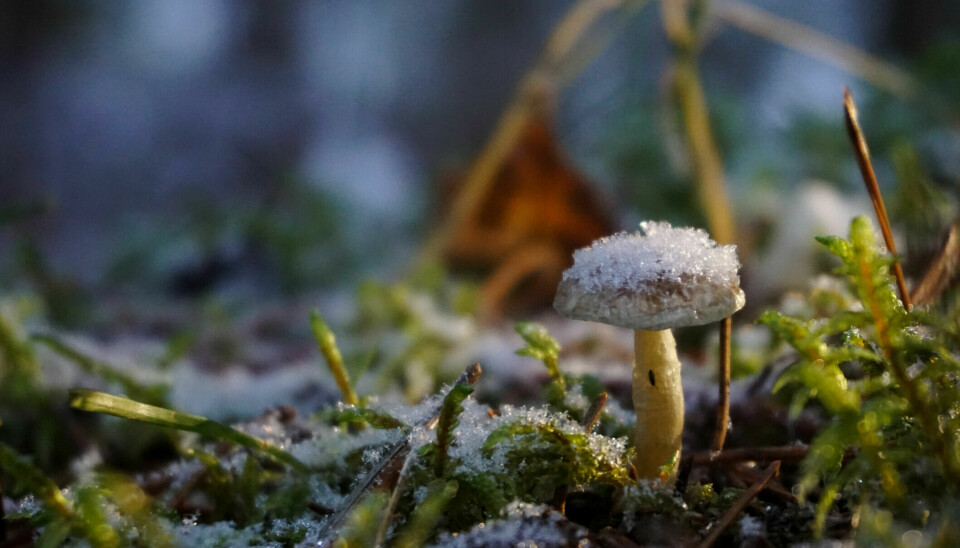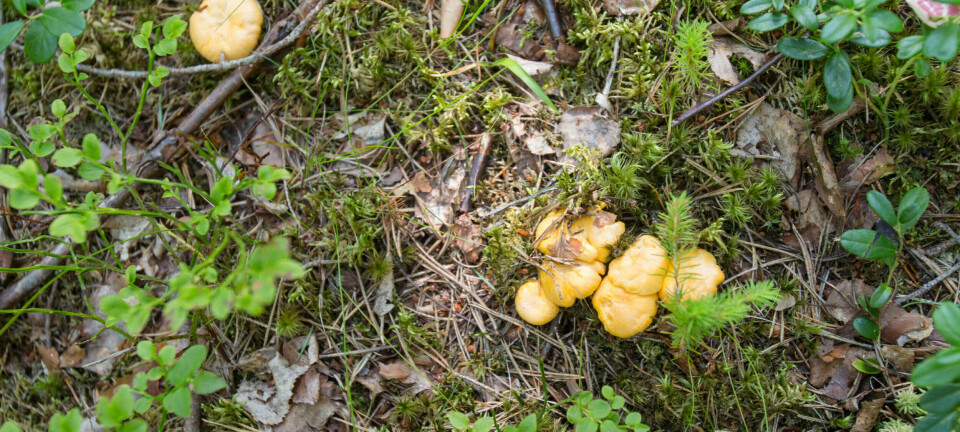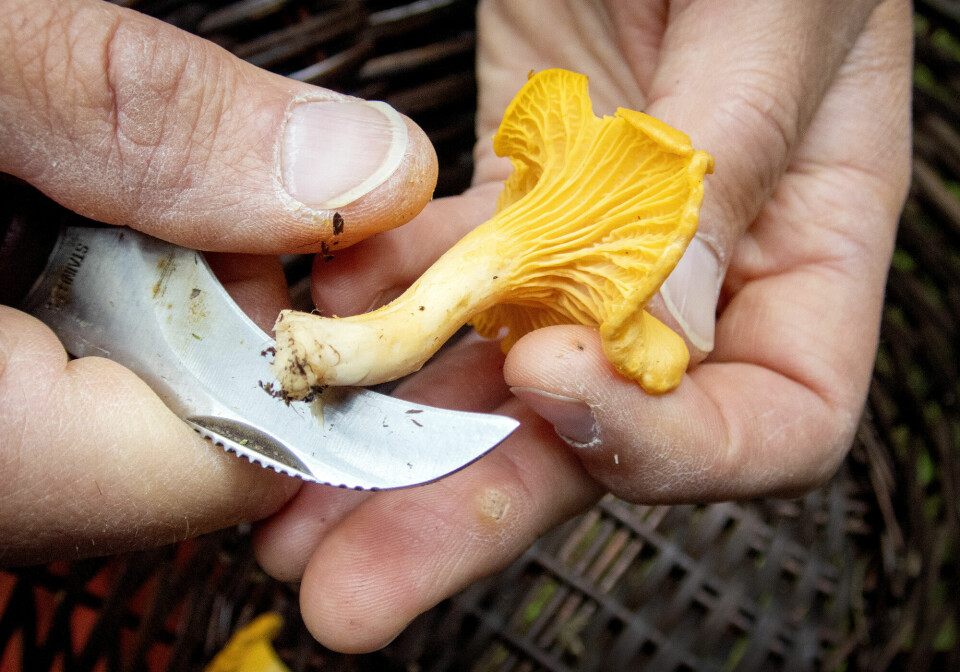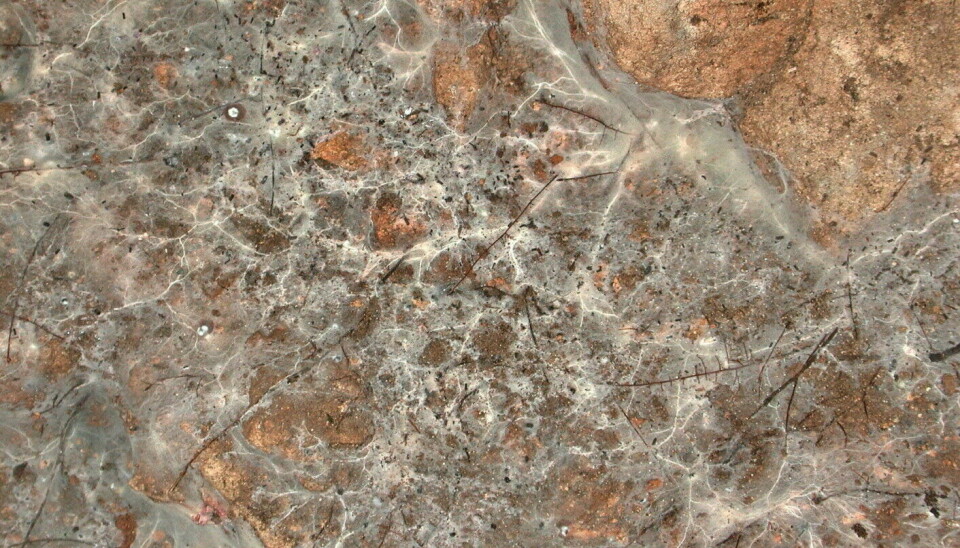
What do mushrooms do during winter?
ASK A RESEARCHER: After winter, there are almost no mushrooms to be seen in the forest, yet interestingly, a lot of mushrooms appear in exactly the same place year after year. What’s happening?

After the snow has settled, there are still some trees that shade what remains of the mushrooms in the forest. Chanterelles are difficult to find.

When we harvest chanterelle, we pick the visible part of the mushroom. It is the fruiting body that spreads the spores of the mushroom.

The fruiting body of the chanterelle and many of the common edible mushrooms, including our most poisonous ones, disappear over the winter.
The chanterelle is one of several mushrooms that stay hidden underground.
And there, they do something that is important for the trees in the forest.
Most mushrooms emerge in the autumn, a time when the forest is rich in moisture and nutrients. The visible part of the chanterelle on the forest floor, commonly referred to as the mushroom itself, is actually its fruiting body.
“The rest of the mushroom lives underground. This consists of thread-thin cells, hyphae, which branch and make up the underground mycelium. If you compare it with an apple tree, the mycelium is the tree itself and the fruiting bodies are the apples,” Klaus Høiland tells sciencenorway.no.
Høiland is a professor of mycology, the study of fungi, at the University of Oslo.
Lives together with trees
If you dig under the fruiting body of a chanterelle, you will see the network of fungal threads called mycelium. It looks a bit like a white spider web. You can also see this under many other mushrooms.
If you follow the mushroom threads from the chanterelle, you will see that they wrap around tree roots.
Chanterelles form a so-called mycorrhiza with trees. So, the mushroom is thus interconnected with the forest trees.
“The mushrooms do it in a clever way. They enter the plant roots and suck the sugar from the roots. It’s a mutual benefit, as the mushroom also supplies the trees with water and nutrients from the soil,” Høiland says.

Breaks down and absorbs nutrients
Most viewed
The mycorrhizal system is important for trees. The fungus helps increase the surface area and is better than plant roots at absorbing water and important nutrients such as nitrogen, phosphorus, and potassium.
Chanterelles and other species that form mycorrhiza with the roots of forest trees are also good decomposers. They break down dead material around the roots, making it easier for trees and other plants to absorb nutrients from the ground.
Chanterelles can live for several years
The part of the chanterelle that we harvest, its fruiting body, only emerges during the season before disappearing again in the winter. But the fungal network underground does not disappear, and the chanterelle can appear in the same place several years in a row.
“All mycorrhizal roots are mostly perennial. Those who have secret chanterelle spots don’t talk about them because chanterelles are perennial and return to the same place year after year, unless the site dries out completely in autumn,” Høiland says.
Some of the fruiting bodies that have grown late in autumn can remain even after the temperature drops below freezing. The golden chanterelle will start to wilt, while the winter chanterelle can withstand the cold.
Høiland says that the winter chanterelle can tolerate being completely frozen and is able to spread its spores when thawed again. If the weather is dry and there is little snow, the winter chanterelle can last all the way until Christmas Eve.


A lot of moisture and nutrients make them return
Some mushrooms behave like liverleaf and coltsfoot and appear in early spring. These springtime mushrooms utilise the nutrients that have accumulated in the soil from the previous autumn, and then they quickly vanish again.
When summer arrives, forest trees produce sugar through photosynthesis. The tree uses this sugar to grow. Just like the trees, mushrooms start to grow when there is access to nutrients.
That is why chanterelles and most mushroom species are most prevalent in autumn, because that is when there is the most access to nutrients. The ground becoming more moist as it gets cooler in the autumn is also important for the fruiting bodies to begin to germinate.
“In summer, it's usually dry, but summer rains can trigger mushrooms to suddenly appear, as happened this year with an extended period of rainfall,” Høiland explains.
Photos: The three photos at the start of the article were photographed by Alexander Time Lindberg.
———
Translated by Alette Bjordal Gjellesvik
Read the Norwegian version of this article on forskning.no




































